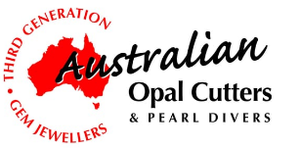The Truth Behind Synthetic Opal - How To Stay Safe While Shopping
Knowledge on the different types of opals can be hard to obtain; without a trained eye, certain patterns and ‘tells’ can often be overlooked. That’s why it is so disheartening when online stores sell synthetic ‘fake’ opal. Many individuals will not think of authenticity when looking at opal jewellery to purchase, as there is already a gathered trust that what they are purchasing is ‘genuine’.
Opals currently make the best gifts; opal rings and jewellery are simple and easy to get for that ‘special someone’ and can be bought for both men and women alike. By educating yourself before buying an opal, you can avoid being unfairly charged exorbitant amounts, and shop without the anxiety of a deal-gone-wrong.
Currently, the only way to ultimately tell if an opal is synthetic are through visual ques. Luckily, all of the sure-fire ‘tells’ are pretty distinct, if you know what to look for.

What exactly is a ‘fake opal’?
A ‘fake’ opal (also known as a synthetic, or man-made opal) are stones that have been created with the same properties as an opal, just under the conditions of a lab and human intervention, rather than the rare phenomenon that opal is known for. This concept of ‘imitation opal’ is not new, and although upon first glance they can be deceiving, their chemical compact contains minerals that cannot be found in natural opal, meaning the synthetic gem must be cared for differently in comparison to its natural counterpart.
Currently the only ways to determine an opals authenticity when shopping are strictly visible. The main ‘catch’ is what gemologists refer to as a ‘columnar structure’, or ‘snake skin’ pattern. If you are able to hold the opal, turning it on its side could reveal straight columns of colour that run vertically; if these are present in the stone, then it is a fake opal. Synthetic opals also will emit a green colour when examined under a UV light, which is the reason why jewellers will often carry a UV torch to test if the stone ‘fluoresces’. If there is nothing, then it is a natural stone.
How to tell if an opal is real
By educating yourself before purchasing opals, potential fraud can be avoided. To help you be a more informed and confident customer, we've put up a list of some more simple techniques to recognise whether an opal is real or not.
- The Opal Pattern: When looked at (either under magnification or with the naked eye), you can observe that synthetic opals have a regular colour pattern. Natural stones are random and do not have an even spread of colour ‘flashes’. If the stone is exhibiting structural patterns, then it is likely to be fake.
- Country of Origin: Most opals are mined from Australia, the ‘opal capital of the world’. Although opal can be mined from other places, Russia and Hong Kong have become notorious in recent years for producing high-quality fake opals, that some sellers may try to pass off as the real thing.
- Symmetry: No opal will contain a perfect split. If the opal is a natural stone, then even with cutting and polishing the stone, it may not be entirely symmetrical.
- Colours on the Surface: Natural opals are layered, akin to a ‘sea of colour’. If the stone you are inspecting is very ‘shallow’, or only appears to have colour on the top layer, then you should proceed with caution.
- Price: Opals are incredibly versatile, however, a $20 price tag (as is often seen on online jewellery stores) should create a healthy amount of suspicion. The deal may be real, but the chances are the opal is not.
No matter if you're seeking gold opal rings or mens opal rings, synthetic opal gemstones may be stunning, with dynamic, crystal clear light and colour plays. Both jewellers and gemstone merchants should be prepared to guarantee their work and provide third-party authentication of their opals.
Manufactured opals can provide access to exquisite jewellery styles and appearances at a budget-friendly price because they are so inexpensively priced. However, if you're paying genuine opal costs, make sure you're getting a genuine opal.
How to pick fake opal from Australian Opal Cutters on Vimeo.
